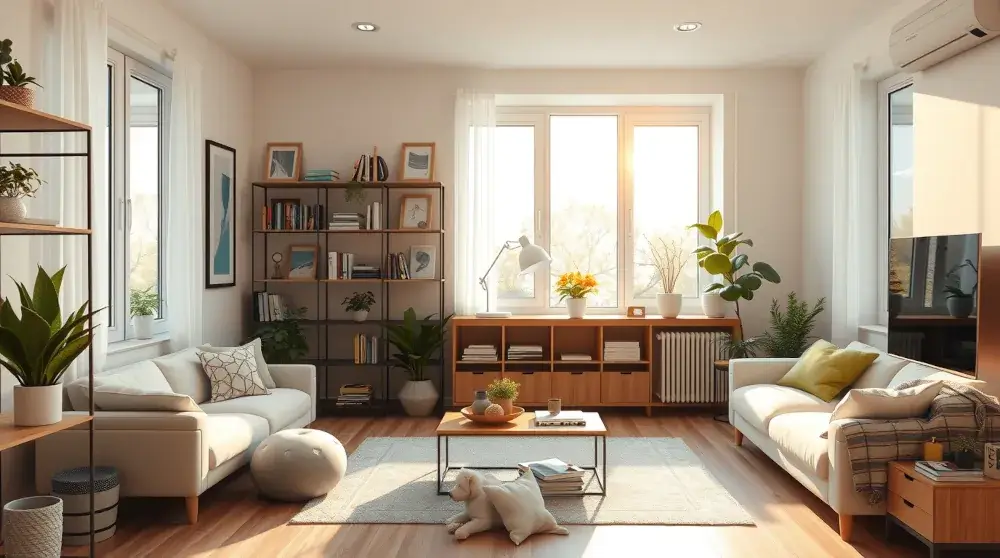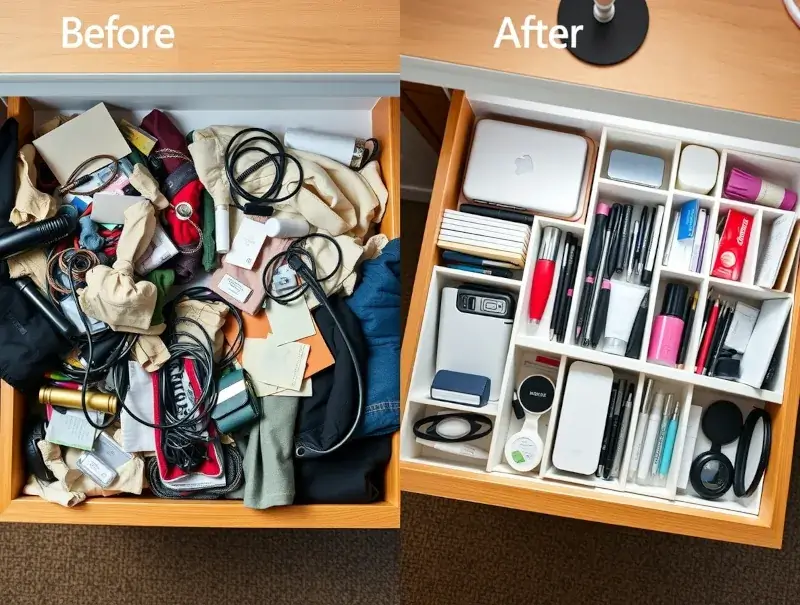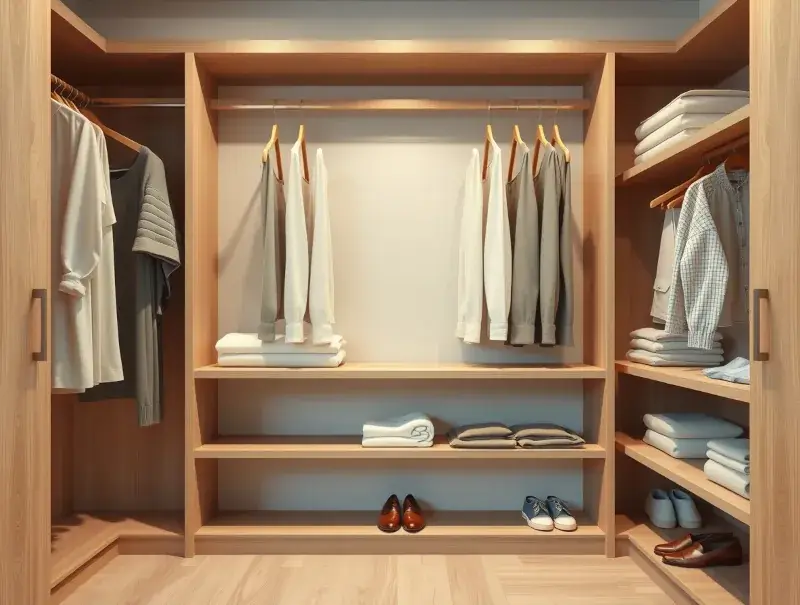
Introduction: Feeling Overwhelmed by Clutter?
Have you ever walked into your bedroom or kitchen and instantly felt drained, just by looking at the mess? Maybe your closet is overflowing with clothes, yet you still struggle to find something to wear. Or your kitchen counters are hidden under appliances, mail, and random items that never seem to have a home.
Clutter doesn’t just take up space—it takes a toll on your mood, energy, and productivity. Studies even show that a messy environment can raise stress hormones and make daily tasks harder. The good news is you don’t need to turn your whole home upside down to get results.
The secret to successful decluttering is to start small, build momentum, and celebrate progress along the way. This beginner’s guide will show you how to get started without feeling overwhelmed, with practical strategies you can use right now. And if you want a complete step-by-step plan for every room, check out our Decluttering Checklist.
Why Decluttering Feels So Hard
Before we jump into the “how,” it’s important to understand the “why.” Why is it so tough to let go of things we don’t use or need?
- Decision fatigue – Each item forces a decision: keep, toss, or donate. When multiplied by hundreds of items, it’s exhausting.
- Emotional attachment – A gift from someone special or an old souvenir may feel impossible to part with.
- “What if” thinking – What if I need it someday? What if I regret tossing it? These doubts keep clutter in your home far longer than necessary.
👉 Recognizing these roadblocks is the first step. Once you know why it feels hard, you can start tackling clutter more confidently.
Decluttering Tips for Beginners
1. Start Small (One Drawer Rule)

Don’t overwhelm yourself by starting with your entire garage. Pick one small, contained area like a junk drawer, bathroom shelf, or nightstand. Success with a small space builds confidence to move on to bigger projects.
2. Try the 10-Minute Rule
Set a timer for just 10 minutes. Declutter as much as you can within that time frame. When the buzzer goes off, stop. This removes pressure and turns decluttering into a quick, doable habit.
3. Use the 20/20 Rule
Ask yourself: can I replace this item for under $20 in less than 20 minutes if I ever really need it? If yes, let it go. This rule helps eliminate “just in case” items.
4. Category, Not Room
Instead of tackling an entire room, focus on one category. Try all your shoes, mugs, or books at once. Seeing duplicates makes it easier to decide what stays and what goes.
5. Easy Decluttering Hacks
- Donation box method – Keep a box near your closet. Every time you try something on and don’t like it, drop it in.
- The maybe box – Place uncertain items in a sealed box. If you don’t open it after 6 months, donate it without peeking.
- 12-12-12 rule – Challenge yourself: find 12 items to throw away, 12 to donate, 12 to return to their proper place.
- Four-box method – Label boxes: Keep, Donate, Trash, Relocate. Every item must go in one—no “maybe” pile.
Common Mistakes Beginners Make
- Buying organizers too soon – Many people rush to buy bins and baskets, but end up just storing clutter more neatly. Always declutter first, then organize what’s left.
- Trying to declutter the entire house in a day – This leads to burnout. Decluttering is a marathon, not a sprint.
- Moving clutter, not removing it – Shoving things into another closet or under the bed isn’t decluttering, it’s hiding.
- No system for outgoing items – If bags of donations pile up by the door, clutter hasn’t truly left your home. Plan where items will go: donation center, resale, or recycling.
Beginner’s 4-Week Decluttering Plan
Here’s a practical starter plan to help you stay on track:
Week 1: Small Wins
- Junk drawer → toss broken pens, expired coupons, old keys.
- Bathroom cabinet → check expiration dates on skincare and medicine.
- Entryway → pare down shoes and coats to essentials.
Week 2: Kitchen Basics
- Pantry → throw away expired food, group like items together.
- Countertops → clear appliances you rarely use (like that waffle maker collecting dust).
- Fridge → wipe down shelves, toss expired condiments and leftovers.
Week 3: Bedroom & Closet

- Closet → try the “hanger trick”: turn hangers backward, and donate clothes not worn in 6 months.
- Drawers → fold items neatly, donate duplicates.
- Nightstand & under-bed storage → remove items that don’t belong.
Week 4: Living Areas & Paper Clutter
- Coffee table → keep only items you use daily.
- Bookshelves → donate books you won’t read again.
- Mail, magazines, and receipts → recycle what you don’t need, file important papers into a simple folder system.
By spreading tasks over 4 weeks, you’ll avoid burnout and build lasting momentum.
Staying Motivated Along the Way

Decluttering isn’t just about getting rid of stuff—it’s about creating space for what matters. But how do you keep going when motivation dips?
- Take before-and-after photos – Visual proof of progress keeps you inspired.
- Celebrate small wins – Even clearing one drawer counts. Reward yourself with a relaxing evening, not more shopping.
- Join a challenge – Try a 30-day decluttering challenge on Pinterest or Instagram for accountability.
- Make it fun – Put on your favorite playlist or podcast while you declutter.
Remember: progress, not perfection.
Decluttering as a Lifestyle
Think of decluttering as a habit, not a one-time project. Here’s how to maintain it:
- One in, one out – Every time you bring something new into your home, remove one item.
- Keep a donation box handy – When it’s full, drop it off right away.
- Seasonal reviews – Revisit your home each season (see our Spring Declutter Challenge) to keep clutter from sneaking back.
- Practice mindful shopping – Ask yourself before buying: “Do I need this? Will it truly add value?”
Conclusion: Your Clutter-Free Journey Starts Now
Decluttering can feel overwhelming, but once you start small and build consistency, you’ll notice the difference: calmer spaces, easier routines, and a lighter mind.
You don’t need to achieve Pinterest-perfect minimalism. Your goal is a home that feels peaceful, functional, and truly yours.
If you’re ready to go further, check out our Decluttering Checklist for a full room-by-room guide. Or dive into Mindful Decluttering & Intentional Living to turn decluttering into a sustainable lifestyle.
Remember: you don’t have to do everything at once. Just start—and let progress build from there.
